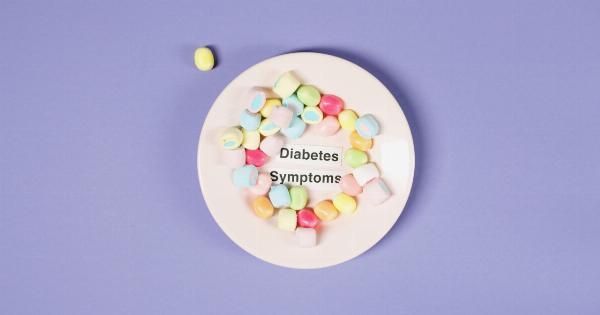Prostate cancer is a significant health concern for men globally, with more than a million new cases reported each year. It is the second most common type of cancer among men, and the third leading cause of cancer-related deaths.
However, with increased awareness and early detection, the power to fight prostate cancer lies in our hands. By understanding this disease, recognizing the risk factors, and adopting preventive measures, we can make a significant impact on reducing the incidence and mortality rates associated with prostate cancer.
Understanding Prostate Cancer
Prostate cancer develops in the prostate gland, a small walnut-sized organ located below the bladder and in front of the rectum. This gland produces seminal fluid, which nourishes and transports sperm.
Like other types of cancer, prostate cancer occurs when there is an uncontrollable growth of abnormal cells within the prostate, forming a tumor. If left undetected and untreated, these cancer cells can spread to other parts of the body, leading to severe complications and a higher risk of mortality.
Risk Factors and Prevention
While the exact cause of prostate cancer is still unknown, certain factors increase the chances of developing this disease. Age is a crucial risk factor, as the incidence of prostate cancer rises significantly after the age of 50.
Men with a family history of prostate cancer are also at a higher risk, suggesting a genetic predisposition to the disease. Additionally, race plays a role, as African American men have a higher chance of developing prostate cancer compared to men of other ethnicities.
While some risk factors are beyond our control, there are steps we can take to reduce the risk of prostate cancer.
Regular exercise, maintaining a healthy diet rich in fruits and vegetables, and avoiding excessive intake of alcohol and tobacco can contribute to overall prostate health. Furthermore, studies suggest that certain dietary supplements, such as lycopene and selenium, may have a protective effect against prostate cancer.
However, it is essential to consult with healthcare professionals before starting any new supplements or implementing significant dietary changes.
Importance of Early Detection
One of the most significant factors influencing prostate cancer outcomes is early detection.
Regular screening tests, such as the prostate-specific antigen (PSA) blood test and digital rectal examination (DRE), can help identify prostate abnormalities at an early stage, even before symptoms manifest. The PSA test measures the level of a specific protein produced by the prostate gland, while the DRE allows a healthcare professional to check for any irregularities in the size, shape, or texture of the gland.
Early detection enables timely intervention, providing more treatment options and increasing the chances of survival.
It is crucial to note that a high PSA level does not necessarily indicate the presence of cancer, as other non-cancerous conditions can elevate PSA levels.
Further diagnostic tests, such as biopsies and imaging studies, are necessary to confirm the diagnosis and determine the stage and aggressiveness of the cancer.
Available Treatment Options
Treatment for prostate cancer depends on various factors, including the stage of the cancer, the presence of metastasis, overall health, and individual preferences.
For localized prostate cancer confined to the prostate gland, treatment options may include active surveillance, surgery, radiation therapy, or cryotherapy. Active surveillance involves closely monitoring the cancer’s progression without immediate intervention, while surgery aims to remove the prostate gland and surrounding tissues.
Radiation therapy utilizes high-energy beams to kill cancer cells, and cryotherapy involves freezing cancer cells to destroy them.
In cases where cancer has advanced beyond the prostate gland, treatment options may include androgen deprivation therapy, chemotherapy, immunotherapy, targeted therapy, or radiation therapy.
Androgen deprivation therapy aims to reduce the levels of male hormones that fuel the growth of prostate cancer cells. Chemotherapy uses drugs to kill cancer cells throughout the body, while immunotherapy stimulates the body’s immune system to target and destroy cancer cells.
Targeted therapy focuses on specific genetic or molecular abnormalities present in cancer cells, inhibiting their growth and spread.
Supporting Research and Awareness
Research plays a pivotal role in improving our understanding of prostate cancer and developing more effective treatment options.
Organizations dedicated to prostate cancer research, such as the Prostate Cancer Foundation and Movember Foundation, work tirelessly to fund research projects and raise awareness about the disease. These initiatives aim to identify biomarkers, genetic factors, and novel treatment strategies for prostate cancer.
Additionally, community outreach programs and educational campaigns play a crucial role in spreading awareness about prostate cancer, encouraging men to undergo regular screenings and adopt a proactive approach to their health.
Support Networks and Coping with Prostate Cancer
Being diagnosed with prostate cancer can be emotionally challenging for both the patient and their loved ones. It is essential to recognize the importance of support networks and seek help when needed.
Numerous support groups and online communities connect individuals facing prostate cancer, providing a space to share experiences, obtain information, and find emotional support. Additionally, healthcare professionals, psychologists, and counselors can assist in developing coping strategies and providing guidance throughout the treatment journey.
Conclusion
The power to fight prostate cancer lies within our collective awareness and proactive measures.
By understanding the risk factors, adopting a healthy lifestyle, and prioritizing regular screenings, we can significantly reduce the incidence and mortality rates associated with this disease. Moreover, supporting prostate cancer research and spreading awareness can contribute to advancements in treatment options and ultimately improve outcomes for those affected by prostate cancer.
Together, we can make a difference in the battle against prostate cancer.




























